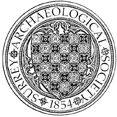Eastgate House, 225 High Street, Guildford
Evaluation by J Pine of TVAS revealed evidence for 13th–15th century layers, with the possibility of a cut feature of medieval date also being discovered, although this could not be confirmed. Evidence of 17th–18th century pitting activity was also revealed, followed by 19th–20th century disturbance in a relatively deep sequence that suggested continuous activity on the site for some considerable time.


